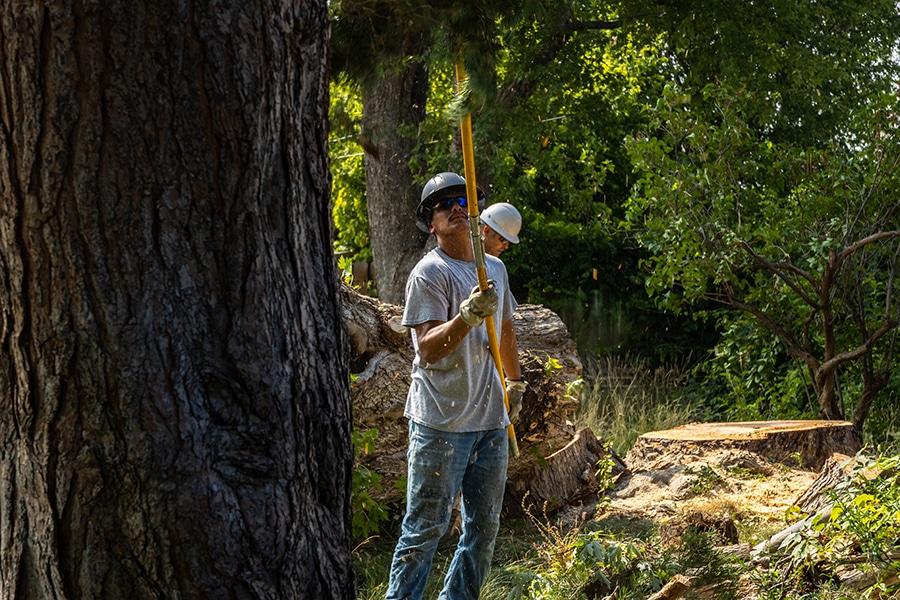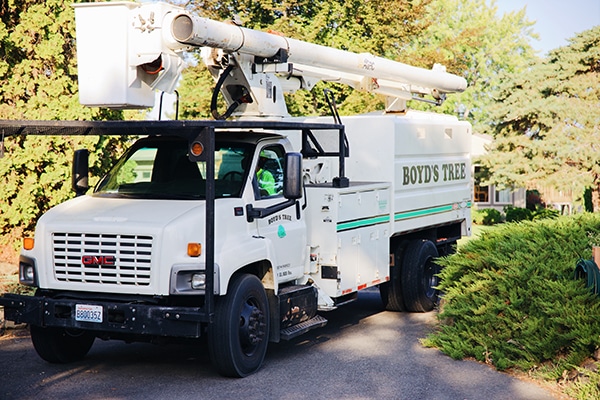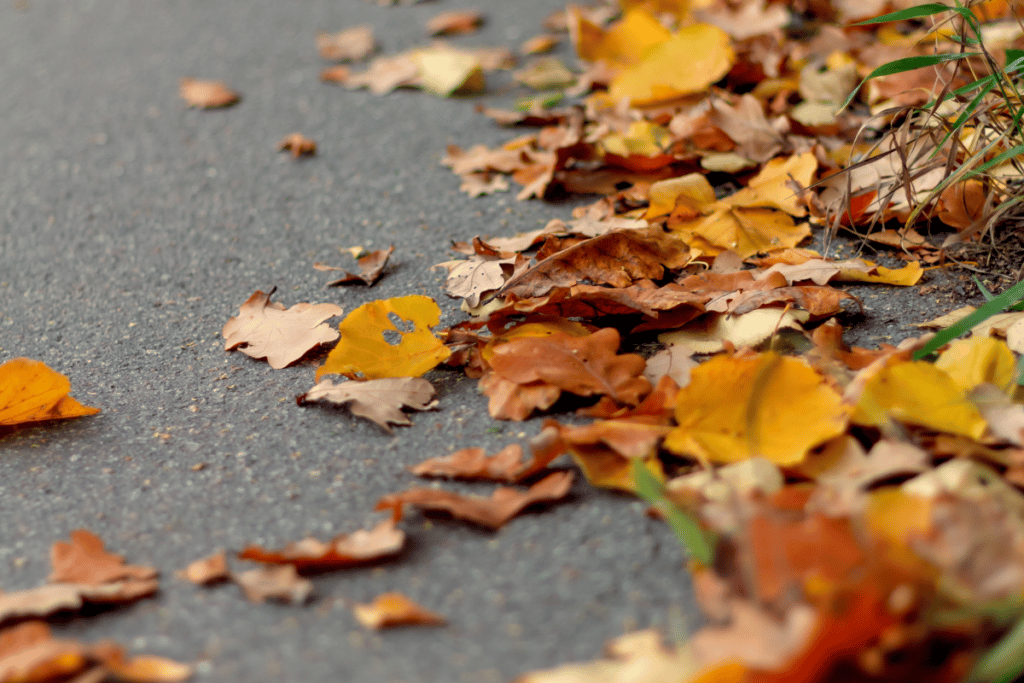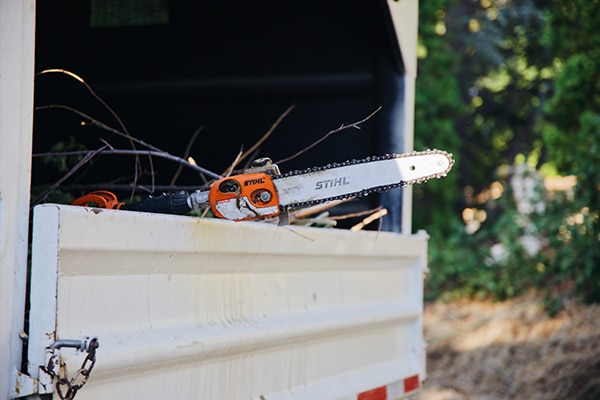As the temperature turns colder and snow and ice loom in the not-too-distant forecast, you may be asking yourself, “how do I prep my trees for winter?” While snow and ice might make for beautiful scenery and conjure up images of sitting by a warm fire and being cozy with loved ones, the weather outside can wreak havoc on your trees, especially new, tender or subtropical trees.
Some more notable types of injury due to severe winter weather, if you don’t prep your trees for winter, including sunscalding on trunks and branches, browning and desiccants of evergreen foliage, root injury, and snow and ice damage. But there are measures you can take to ensure your trees that provide you with so much-needed shade during the summer will remain healthy and vibrant through winter.
Steps to Take to Prep Your Trees For Winter
Here are some practical ways that you can do some winter tree preparation and help your trees successfully battle the fierce winter weather so they can enter spring healthy and thriving.
Use Mulch to Help Trees Harden Off Against Harsh Winter Temperatures
Begin by spreading a 6-inch layer of shredded bark mulch – about two to three inches of mulch – around the base of your trees. Start from approximately 3 inches out from the trunk and reach out to at least as far as the drip line. The drip line is the area just below the tree canopy. The purpose of applying mulch is to allow the tree to retain moisture and insulate the tree roots from severe cold and frost, preventing the tree from experiencing frost heaving. If you have some warmer weather, you could recede the mulch a bit as mulch can prevent the soil from adequately absorbing heat.
Water Helps Insulate Your Trees
We suggest you continue watering your trees well into fall, but before the ground freezes. This is especially relevant for newly planted trees. Water serves as an insulator for your trees, as plant cells that are filled with water will be better equipped to ward off damage that frigid winter weather can cause.
It is helpful to know that moist soil normally remains warmer than dry soil does. This in turn shields the roots of your tree from extreme temperatures.

Wrap Your Tree Trunk
Variable winter temperatures can cause sunscald on your trees. In other words, warm sun during the winter could prompt the trunk cells to emerge from dormancy and become active. However, once the temperatures dip below freezing again, active cells and conductive tissues are killed, which brings about injury that could lead to scarring.
In order to prevent sunscald, we recommend that you wrap your tree trunks, particularly those of saplings, with a commercial tree wrap or light-colored fabric. Be sure to wrap upward from the base of the trunk, overlapping layers by one-third.
Wrap the trunk as far as just above the bottom set of branches. Then take off the paper once winter ends. It is prudent to wrap a new tree for at least two years as it gradually develops thicker bark to shield itself from the harsh winter elements. Trees that have thin bark, like birch trees, should be wrapped for a minimum of five winter seasons.
Protect your Trees from Rodents and Other Animals
Begin by putting four wooden stakes about 18 inches into the ground and positioned four to six inches away from the tree. Then wrap one-fourth inch mesh hardware cloth around the stakes, buried three inches deep into the ground. This wrap will help to prevent the trees from being attacked by rodents, rabbits, and other animals.
Fertilize Your Trees to Keep Them Healthier During Winter
Your trees will likely lose much of their nutrients between the summer and winter seasons. This makes autumn the ideal time to provide your trees with fertilizer. You might use a slow-release fertilizer to bolster your trees during the harsh winter months. The fertilizer will also help to prevent damage, disease, and insects.
Wrap Tree Branches with String to Prevent Snow and Ice Damage
Try wrapping all of the branches of your tree with string to prevent heavy snow and ice from sagging the branches. Push the branches up toward the trunk and wrap the tree a few times with string. You could also wrap the tree with plastic mesh fencing.
Prune Your Trees For Winter
Pruning your tree involves removing all dead or dying branches, which bolsters the strength of the tree. Doing this is important for supporting the life of your trees during the winter.
Pruning your tree can offer benefits not just for your tree but also to you and your property. When heavy snowfalls and sits on dying branches, that can cause them to fall, which could mean damage to your property and even potentially causing injury to you or your loved ones. This is why pruning before snow arrives is so vital.
Let Boyd’s Tree Service Help Keep Your Trees Healthy and Thriving
At Boyd’s Tree Service, we are a full-service tree and stump removal business that serves the Tri-Cities and surrounding areas. Boyd’s Tree Service is a fully insured and bonded tree removal contractor with many years of experience with tree care and tree removal.
You’ll find that at Boyd’s Tree Service – comprised of fourth-generation tree men – we provide the most comprehensive tree care. Because we live and work in this community, we understand what it takes for trees and properties to thrive in our unique climate. We take pride in enhancing the well-being, beauty and aesthetics of your trees.
If you live in the Tri-Cities and surrounding areas and you would like more information about our tree services, or to schedule an appointment, we invite you to call Boyd’s Tree Service at (509) 585-4194.







